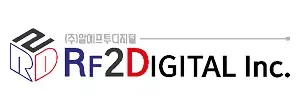At the recently concluded ITU working Party meeting in Geneva, three papers on the general merits of DRM and its high performance were submitted by the DRM Consortium, the Vatican and the Russian federation. Read more and access the papers in full…
• The DRM Consortium paper looked at the merits of DRM in the transition from analogue to digital and was submitted by Broadcast Consultant John Shaw
• The Russian Federation on DRM30 performance on MW concluded that “Overall, the studies showed that the DRM broadcasting provides larger coverage with better quality of audio content with lower transmitter power than traditional AM radio broadcasting.”
• The Vatican trial of 2011 in the super-congested environment of Rome concluded the following:
– Mobile reception of a low power DRM+ broadcasting transmitter has been investigated in the very congested FM environment of the urban area of Rome.
– Acceptable stereo coverage in mobile reception conditions has been verified in areas where predicted field strength is comparable with 44 dBV/m and interference is negligible.
– Using the most robust configuration for DRM+, it has been possible to achieve better coverage with a full stereo program than the one achieved with an analogue FM signal; the overall subjective listening experience was better than that of FM interfered with by splashes coming from adjacent stations.
In view of a possible transition of existing analogue FM services to digital technology it has been found that the use of DRM+ has the following merits:
– possibility to re-use the existing antenna system without any particular precaution, except the one relevant to the maximum peak envelope power of the digital signal;
– no modification of the target service area as a consequence of re-using the existing antennas; this means that the original “shape” of the target service area remains unmodified with benefits for those local broadcasters that have their main audience in a specific service area;
– possibility to use SFN techniques, with the attendant benefits for regional operators who may be able to re-use the frequency to achieve regional coverage.
On the other hand, the current absence of a wide variety of low cost sets capable to receive DRM+ signals presently represents a problem…….”

















